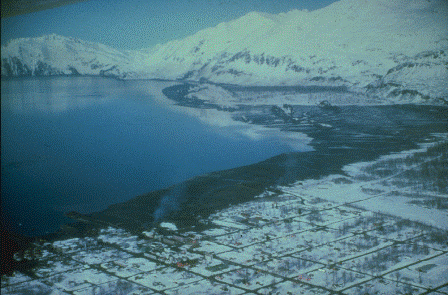Tsunami - Reading in the Deep Sea
November 19,2007.
In order to extend alert times and avoid false alarms, a new seafloor pressure recording system has been designed to detect tsunamis shortly after their development in the open ocean. The project is directed by scientists of the working group 'Marine Observation Systems' at the Alfred Wegener Institute for Polar and Marine Research, part of the Helmholtz Association.
Successful testing of the recording system off the Canary Islands in November 2007 means that a new mile stone for the development of the Indian Ocean Tsunami Early Warning System (GITEWS) has been reached.

The GITEWS project is supervised by the German National Research Centre for Geosciences (GFZ) in Postdam. Scientists of the Alfred Wegener Institute, in collaboration with companies Optimare and develogic, and with the Zentrum fr Marine Umweltwissenschaften (MARUM) and the University of Rhode Island, are developing part of the simulation component and the so-called pressure-based acoustically coupled tsunami detector (PACT) for real-time detection of sea level rises in the deep ocean.
The German tsunami early warning system is unique in that it processes a multitude of information as the basis for a comprehensive and accurate evaluation of every particular situation. Within just few minutes, measurements of the vibrations and horizontal seafloor movements off the coast of Indonesia provide a clear picture of the location and intensity of a seaquake, which, at the warning centre, facilitate the appropriate selection of a previously calculated tsunami propagation model.
However, not every seafloor quake causes a tsunami. "There is only one way to be clear about this and avoid nerve-wrecking and costly false alarms: we must measure sea level directly", says PACT-project leader Dr Olaf Boebel of the Alfred Wegener Institute.
For this purpose, sea level recordings must take place off the coast, in the deep ocean. At water depths of thousands of meters, a tsunami wave travels at several hundred km/hr, but is only inches high, and approximately 60 miles long. Not before it reaches the coast or shallower waters, does a tsunami wave develop into a massive wall of water several meters high.
Being able to detect the very slight sea level rise in the deep ocean reliably and precisely requires the use of bottom pressure sensors. These instruments are installed on the seafloor where they measure any sea level changes in the water column above. In this process, the weight of any additional water leads to minute pressure increases at the seafloor which are, nevertheless, reliably recorded by the PACT bottom units, precision instruments built by Optimare in Bremerhaven.
Representing one of the greatest challenges of the PACT project, this problem was addressed by the Stuttgart-based company develogic through use of highly modern technology: Similar to a fax machine, an acoustic modem uses a sequence of sounds - the so-called telegram - to transmit information to a second modem which is connected to a buoy near the surface, sending the data via satellite to the warning centre.
Within the overarching GITEWS project, the primary PACT objective consists of the new development of a reliable, compact and highly energy efficient system which will record and analyze seafloor pressure every 15 seconds, and which will transmit the information to the surface modem if a tsunami event is detected. After approximately two years of development work on PACT, an important milestone was reached recently, when in-situ tests of the system were completed successfully north of the Canary Islands, using a trial fixture supplied by MARUM (Zentrum fr Marine Umweltwissenschaften in Bremen).
From depths below 10,170 feet and over periods of several days, pressure data were transmitted repeatedly to the surface modem. The most important result: none of the data telegrams were lost, a crucial requirement for the reliable functioning of the warning system.
Having been tested successfully, the new system will now be integrated into the GFZ-developed surface buoy and the entire early warning system. Further tests, scheduled for early next year in the Mediterranean, will investigate the transmission reliability under various weather conditions. "Surely, the upcoming winter storms will give us the opportunity to discover the limits of the system", suggests Boebel.
 Deep Sea Crabs
Deep Sea Crabs